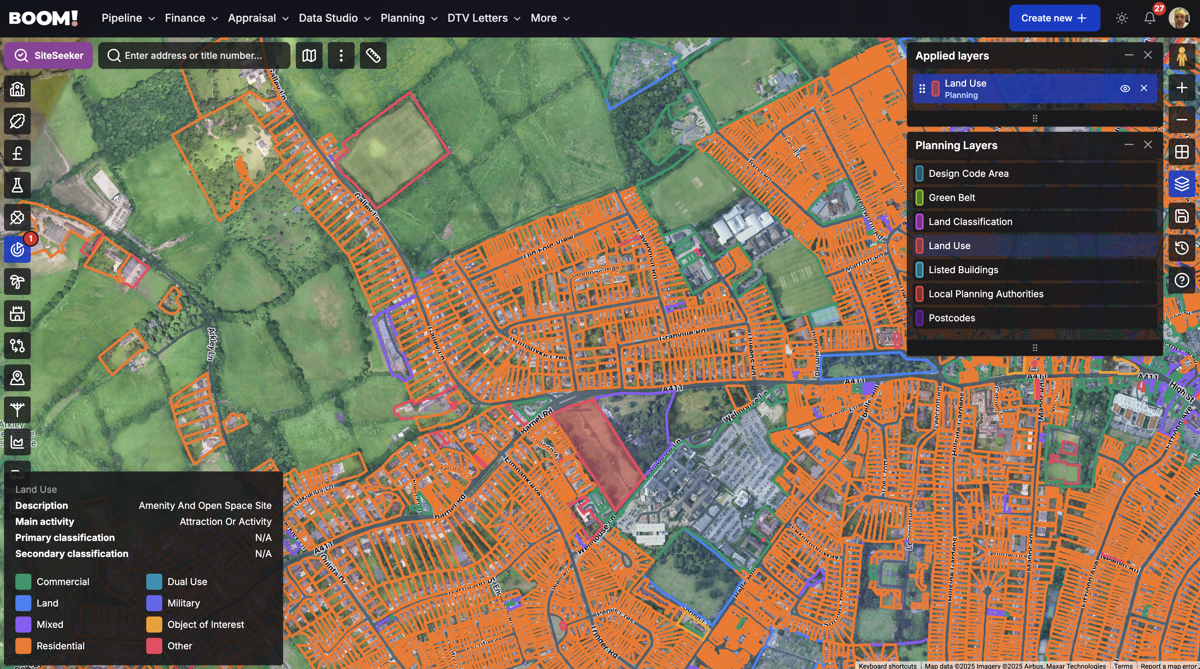Permitted Development Rights 101: The Ultimate Guide for Developers in 2025







Planning permission can be one of the most time-consuming and uncertain parts of any development project. But what if you could bypass it entirely in certain cases? That’s where Permitted Development Rights (PDR) come in. If you're a new developer in 2025, understanding how PDR works can give you a serious head start.
What Are Permitted Development Rights (And Why Should You Care)?
Permitted Development Rights are a set of national rules that allow certain types of building works and changes of use without the need for full planning permission. They're granted automatically by legislation—meaning if your project qualifies, you don’t need to go through the full planning application process.
This can save months of waiting and thousands in fees. In short, PDR can help you move faster and with less risk.
What You Can Do Under PDR in 2025
As of 2025, PDR covers a wide range of development types. Some of the most popular with property developers include:
Class MA: Converting commercial buildings (Class E) into residential (Class C3);
Agricultural to Residential: Converting farm buildings into 10 dwellings (Class Q);
Airspace Development: Adding up to two storeys to an existing 3-storey house or block of flats;
Conversion Above Shops: Turning space above retail or mixed-use units into flats.
PDR is especially useful for repurposing underused urban and edge-of-centre buildings.
Why PDR Matters for Site Sourcing and Feasibility
Permitted Development can make a marginal site viable by:
Reducing planning risk and the project cost;
Speeding up your timeline (project programme) to development;
Making your funding case stronger.
When you're appraising sites, a good understanding of PDR can help you spot prospects that others miss.
Where Developers Get Caught Out (Know the Limits!)
PDR isn’t a free-for-all. There are important limits and exclusions:
Article 4 Directions: Councils remove PDR in certain areas, especially town centres or conservation zones via Article 4;
Conservation Areas/AONBs/National Parks: Many forms of PDR are restricted or unavailable;
Listed Buildings: PDR does not override the need for listed building consent;
Prior Approval: Many PDR projects still need prior approval for transport, noise, contamination and more.
Miss these points, and you could face enforcement action or be forced to reverse the work.
Example: Office-to-Resi Success Story Using PDR
In 2024, a developer in Bristol acquired a vacant office building (Class E) just outside the city centre. Using Class MA permitted development rights, they converted it into 12 one-bed flats.
By submitting a prior approval application instead of full planning, they gained permission in under 8 weeks. Total planning-related costs were cut by 60%, and the scheme launched to market six months earlier than a full application would have allowed.
How to Check PDR Potential on Any Site
Use BOOM! to efficiently assess feasibility:
apply data layers to highlight constraints like Article 4, listed buildings and conservation areas;
integrate article 4, listed buildings and conservation areas into SiteSeeker to remove sites that are not suitable for development via PDR;
explore a site’s planning history as previous approvals may limit future rights.
Conclusion: PDR Is a Developer's Shortcut – But Know the Rules
Permitted Development Rights are a powerful way to fast-track your projects. For new developers, mastering PDR can mean getting to site quicker, with fewer unknowns and more confidence in your deal.
But it’s not a blanket free pass. Always check the site’s constraints, understand the prior approval process, and get expert input if needed.
Learn the rules now, and you’ll be ahead of developers who treat PDR as an afterthought.

How BOOM! Makes Identifying Sites with Permitted Development Rights Simple
BOOM! makes it easy to pinpoint sites where Permitted Development Rights (PDR) still apply. Our Use Class layer, powered by Ordnance Survey’s Land Use dataset, shows you how a site is classified — helping you understand exactly what development may be possible without full planning.
To avoid wasting time on constrained sites, the Article 4 Direction layer highlights areas where local authorities have withdrawn PDR. No guesswork. No missed red flags. Just instant, reliable insight.
Both Use Class and Article 4 data, as well conservation areas and listed buildings are fully integrated into SiteSeeker. Start with the raw layers to understand local constraints, then apply them directly as sourcing constraints so you can focus only on the sites that meet your strategy.